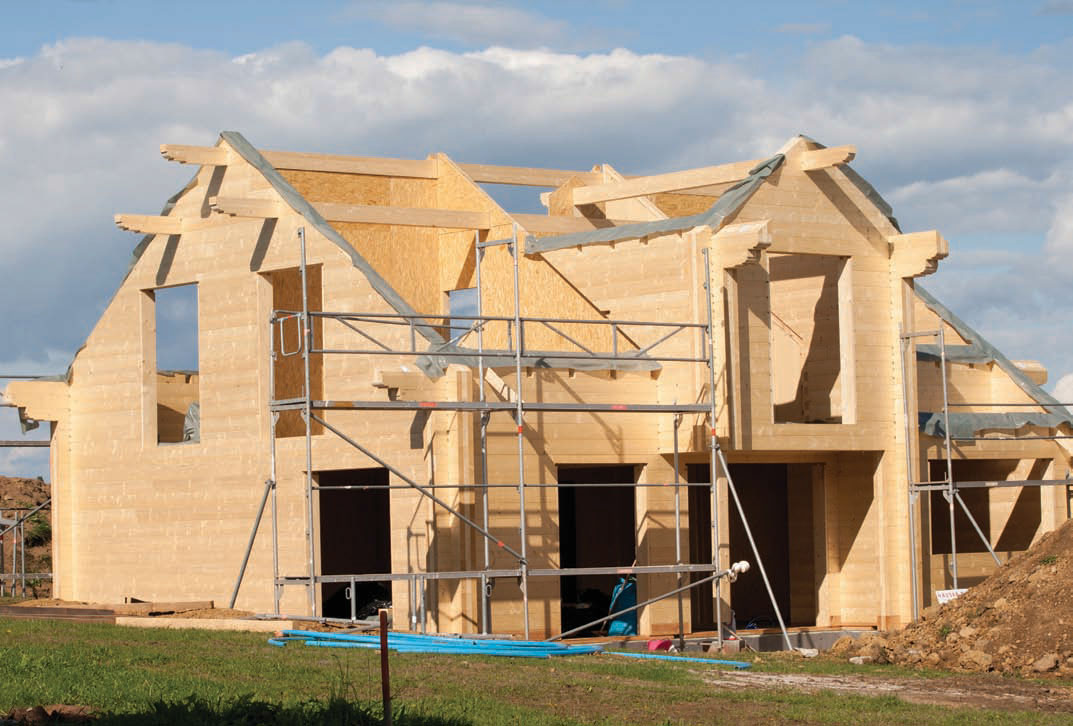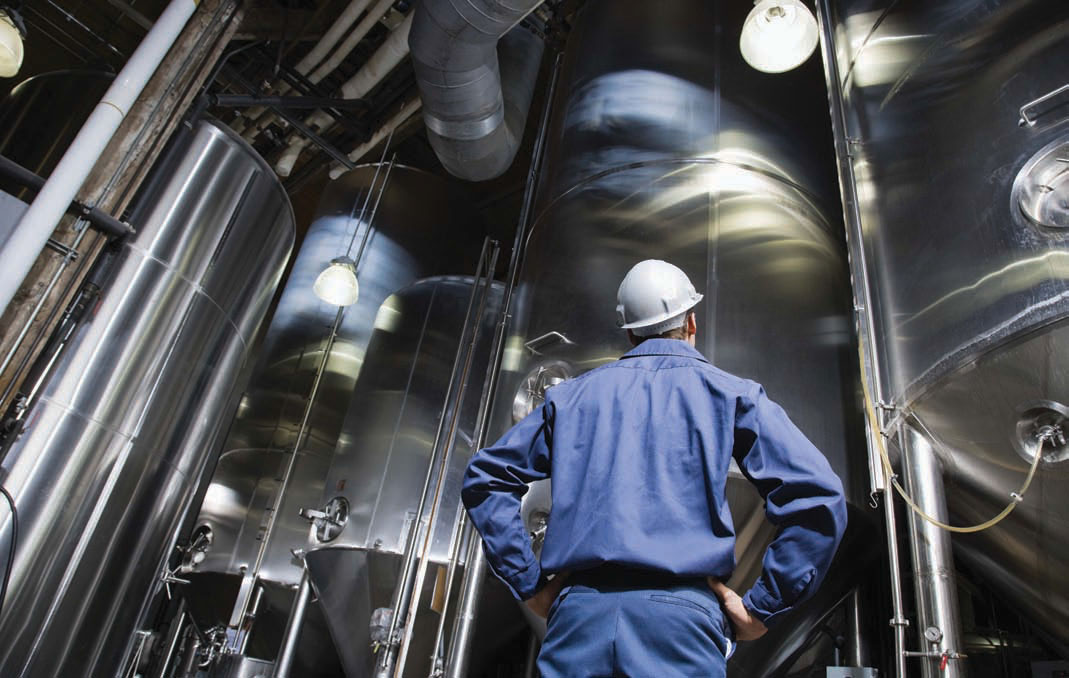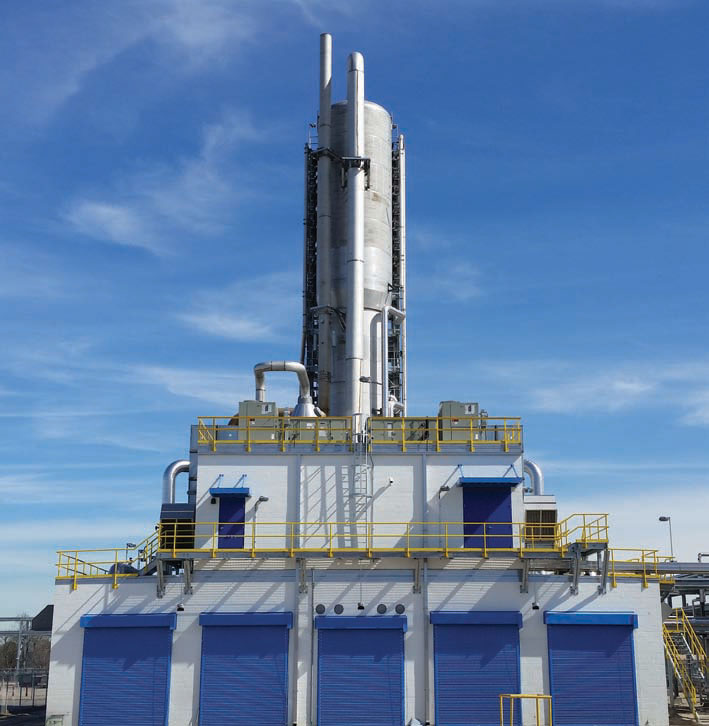Hexion: Of Molecules and Men
14 July 2017Two main components go into wood based panels. One is wood; the other is the binder: the resins and adhesives that hold the wood together. That is the component which has by far the most potential for technological improvement to give new and customer-desired properties to the end panel. Hexion, based in Columbus, Ohio, is the world’s largest resin supplier to the industry. Julian Champkin talked to Joseph "Jody" Bevilaqua, Chief Operating officer and Mark Alness, senior vice president of Hexion’s Americas Forest Products. He found people who are inspired about wood and who want to share their inspiration.
Jody: You ask about the challenges ahead for the resins that manufacturers need. At the highest level we can talk about the raw materials. There are three main groupings. Most adhesives and resins, including formaldehyde, are oil based, effectively sourced from natural gas; so availability and prices fluctuate with oil prices. For amino resins, methanol and urea are the main price drivers. For phenolics, the raw material is of course phenol.
Taking each in turn, we at Hexion are invested in the conversion of methanol to formaldehyde. The source of methanol is natural gas; and because of fracking, the US will benefit from globally competitive natural gas pricing for the foreseeable future. Prices currently are less than three US dollars per thousand cubic feet of gas at the wellhead which, with investment, distribution and leverage costs, rises to around five dollars at the plant.
Formaldehyde goes into polyurethanes and into glyphosphates, used in agriculture, so continued investments will keep all of that on-stream globally. So formaldehyde will stay stable in availability and price.
Phenol is a petro-chemical, and a broadly used material, finding applications in everything from nylons to polycarbonates. That means it draws a lot of investment from producers, and a lot of attention. So we see no real problems in future availability and prices of phenol-based product lines. Nor is there anything reguatory pending that would have any impact on the phenol supply chain. So far so good.
For the wood based panel industry, urea resins are of interest. Two new urea facilities are coming on-stream this summer in the US – they are from third parties, not from Hexion – so the supply chain there is secure. Which means that looking at the bigger picture for the supply chain for the future, on both the phenolic side and on the urea side we believe we are entering an era of ample supply of raw materials. It is balanced to the long side – in other words, we foresee no shortages, but rather the reverse: if anything it will tend towards oversupply.
Mark: That is the background on the raw materials to support the growth in the market where we play. The only issue is fluctuation in the price of oil. The outlook for oil is currently actually quite stable, if no unforeseen wild-card events occur. It means we are entering a period of minimal pricing pressure along the chain of supply; so we at Hexion feel pretty good about that.
WBPI: So the supply chain of raw materials is looking good. What of the products themselves?
Mark: If we start at the obvious place with formaldehyde, this has been one of the great challenges we have had for the past 30 years and more. We produce nine to ten billion pounds globally of formaldehyde annually and there has been regulatory focus on it for all of that time. The Environmental Protection Agency (EPA) has in place CARB2 for the whole of the US; it is the regulation that California has had for several years now. That is good for us and reassuring for us. These are good standards, and we are meeting the most stringent regulatory requirements there are – and at the same time delivering the most stringent performances that our customers need.
Six or seven years ago we thought our customers would see a 10-15% drop in productivity and a 10-15% drop in performance on account of the formaldehyde replacement issue. Fast forward to 2017 and we have caught up. It forced the whole industry to be innovative, which can only be a good thing, and that brings huge advantages.
Jody: Europe and Latin America are moving the same way, the latter at least because of its export market to North America. That leaves Hexion ideally placed.
Mark: The regulatory heat will continue. Formaldehyde is the most studied chemical on the face of the earth. Humans breath it, eat it, and make it in their bodies as part of the life process. The risk assessments around it may yet be re-assessed.
WBPI: And non-formaldehyde products?
Mark: Speciality additives are an area of growth – for example to give high heat resistance, or flame retardency in panels. One of the big issues in the board industry is fire resistance. Phenolic resins are the most heat durable adhesives used in wood products, so there is potential for a look at that raw material for improved future products.
There is a lot of activity on that side. It is not all balanced around the world; Europe has been less invested in it in the last five to 10 years, Asia and the US have been more so. So there may be logistical problems getting materials into Europe.
Jody: We are supplying the world players. So a challenge to us, as a leading supplier, is to make sure that firstly raw materials are available to us, and secondly we can process them and supply the product to our clients.
WBPI: So what are the developments here? Jody: Latin America has been in its biggest recession ever, and is coming out of it now.
The same is true of Europe. In Australia and New Zealand we have a big footprint. Volatility is a big worry in any business, The housing market in the US is growing at 8-10 % a year. Please let it continue at that pace with no spikes! That’s a very positive thing for our customers, day to day.
Mark: One of the things driving a lot of our customers’ growth and profitability is innovation. Here is where Hexion can play a part.
Among the innovations are new building methods. We are seeing cross-laminated timber, and we are seeing big, tall buildings from wood. We will need durable adhesives in that market. There is not one wood issue in forty years that has generated so much excitement. It comes not just from wood people. It is from NGOs, from governments, from planners. There is increasing interest in the use of wood, and the interest is global.
Wood is sustainable, it is carbon-friendly, it is sourced from solar energy. Those tremendous advantages are being realised now. I really believe wood is the product of the future, and it is finally having its day.
Jody: Significant speakers I have listened to in the past two years have talked about the stone age, the iron age, those eras of the past and are saying “This is the age of wood.” And we are entering it now. I think people are literally re-thinking the way we build.
Mark: For our customers, and for everyone in the wood industry, one of the big issues frequently goes unmentioned, and that is a human issue. There have been huge phases of growth in different industries, most recently of course in the digital sphere.
The challenge is to attract young talented people who want to be in a manufacturing environment. What attracts millennials who want more than just to make money, who want to make a difference in the world?
This new excitement in wood – that may be the attractant, the story that does it. We make the technology that sustains the most sustainable building material on earth.
You can see the glamour of Bill Gates and Silicon Valley but for this newest generation we have a story that really does attract them. We don’t need half a million people in the industry, we need just a few of the most inspired and the best. I saw this 40 years ago. It’s why I got into the wood industry. It has taken that long to live up to its potential. It offers challenging jobs, sustainability, and lots of high-tech.
Jody: I won’t name my customers but we see them investing in leading-edge technological content. So there is content to challenge the graduate today.
On the chemistry side, we see the same distributed control systems, big data, big machines and how to use the data and the machines together as a single concept towards better productivity and optimisation. So the chemical business, as well as the wood business, is flooded with new technology. We have not had a hard time attracting people.
Mark: Pay rates in the wood industry and the chemical industry ought to be slightly higher than average in most areas of the country – and with Hexion, that is the case. We currently pay well above the average. One of the biggest challenges, though, is that our plants are where the trees are, not in major metropolitan areas. But if you are starting out on your career and have something grander in mind than just making money – if you want to contribute to changing the world, which is what our industry does – that’s what will 'give the gas' to attract the good people.
WBPI: You spoke of automation, of data feedbacks controlling machines, and so on. These are undoubtably coming; but they remove many of the traditional roles of workers in the industry. Industry 4.0 is the new watchword and a large part of that seems to be about replacing workers with machines. If you take decision-making away from the good people, what is left to attract them?
Jody: Our employees have technical backgrounds. They are attached to our customers’ plants, they spend their time there checking how everything is running and constantly trying to find ways that things could be improved. It is science applied in the workplace.
We have been running that business model for many, many years now. It is much more than just selling a railcar of adhesives, it is partnering with our customers. We work that way with, for example, Weyerhaeuser in Washington state. They are a very blue-chip customer, and we have a very integrated relationship with them, so our graduates become part of our customer’s work-team.
It is the entire process – we add value by adding this service. It is the ultimate differentiator between one company and a rival – the most significant differentiator there is. Mark: And the partnership, the embedding of our people, helps customers solve problems and find opportunities that each of us alone could not. New solutions appear to things that we did not think could be resolved.
Jody: Automation removes work of minimal value. The high-performing communication and efforts, the interface and mutual problem-solving – those are done by people. So bringing in automation while keeping good people is not a conundrum, it’s a cohesive strategy.
Mark: There is a saying: ‘If you cannot get the people, that’s when you invest in technology to replace them’. Plywood is an example, and an interesting case. Making plywood is a labour-intensive activity. Invest in automating technology and you can reduce the labour force. The balance of how much you do that depends on where you are and what labour force is available. In Chile, they have just opened a plywood plant with the latest technology. In Brazil, a plywood plant that previously would have employed 800 people might come down to 500; in North America, the figures for the same size of factory might be 300 taken down to 200.
It is the same in particleboard, in MDF, in HDF; automation makes it faster and easier. It takes investment, though, and to have access to that investment you need to be profitable. Those businesses that are profitable now can make that investment to stay profitable into the future.
Jody: In 2008 – everyone stopped! Plants just closed down. The ones that stayed open did just that and little else. But now we are coming out of that. All our customers are now profitable. And now the players are starting to make significant investments.
Mark: One of the biggest markets in the world is Latin America and they are starting to appreciate that. They have huge forest reserves; they have a burgeoning middle class that needs wood products. My hope is that players like Brazil will take advantage of their resources. Wood is one of the lowest cost building materials that people use.
What we need to do is to make sure we have the capacity to meet the need. We are leveraging our global technology and know-how towards Latin America. Jody: There is also the extraordinary other story. We share our innovation across other industries. We have a number of chemistry platforms across a wide range of markets.
We take those platforms and leverage them as broadly as we can. So amino and phenolic resins go into automotive applications, into mass transport, even into asphalt shingles. We leverage the chemistry into various markets and that helps us to offer it at the lowest cost.
Mark: We do the same round the formaldehyde platform. Epoxy is another platform, of less relevance to wood. As a company these are our three platforms. If you think about phenolic resins, they are replacing aluminium in windows, replacing steel in cars; combined with carbon-fibre they make windmills in Amsterdam. This is because they are heat-resistant. The technology can transfer; heat-durable phenolic materials can go into wood areas, and vice versa; the technology and the machines are different; the science is the same.
Jody: To finish where we started, with formaldehyde. Since November 2016 we have commissioned three new formaldehyde facilities, two in North America, one in South. All three are up and running now. So that is very recent, and that’s the big money. But there are lots of investments in less visible places also. We have 22 plants around the world.
Our commitment is to keeping plenty of molecules flowing to our customers, and to keep significant investment in our research and development. That way we meet the needs of customers before they ask.




